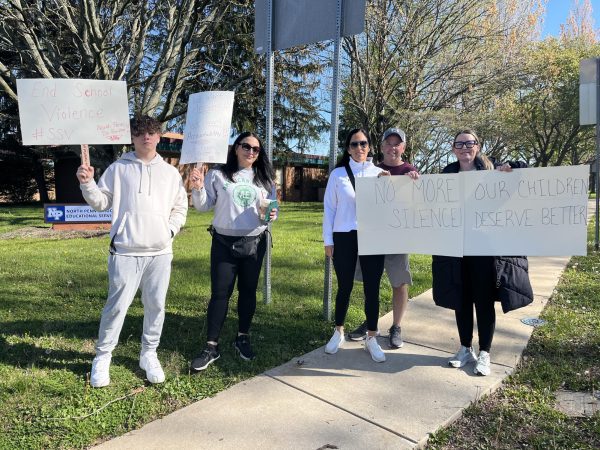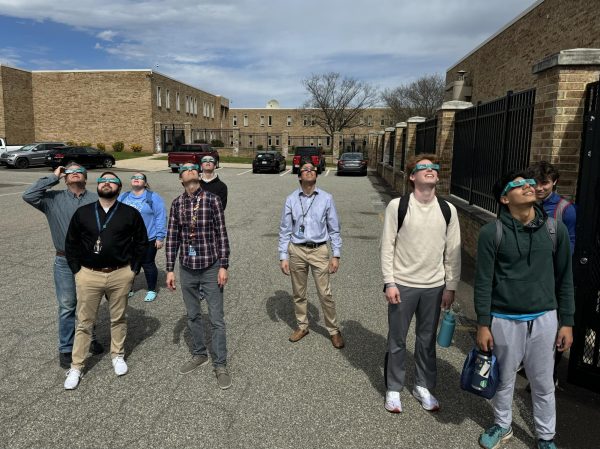This Week in Science
Fluorescent Frog Discovered in South America
Biofluorescent organisms absorb light and “re-emit” it at longer wavelengths, causing the organism to “glow.” Biofluorescence has been found primarily in marine life, but never before in amphibians. However, researchers in Argentina claim to have discovered a fluorescent frog. According to a study published a team of Brazilian and Argentinian researchers in the Proceedings of the National Academy of Sciences, the South American polka dot tree frog is fluorescent. Without shining a UV light, this frog doesn’t look special. However, when an ultraviolet light is shined on the frog, it glows bright green. Recently, scientists discovered that the frogs have biliverdin, a pigment found in insects that fluoresce red. To investigate this, the scientists, expecting to see a slight red fluorescence, shined a UV light on the frog. Rather than a slight red glow, the entire frog glowed green. Further investigation found that hyloin-L1, hyloin-L2, and hyloin-G1 molecules found in other fluorescent organisms were also in the South American polka dot tree frog. Now, scientists are trying to figure out what role these molecules play.
For More Information: http://www.npr.org/sections/thetwo-way/2017/03/16/520311715/groovy-scientists-say-theyve-found-the-first-fluorescent-frog
New Drug Could Prevent Heart Attacks and Strokes
Studies have shown that the injectable drug, Repatha (also known as evolocumab), reduces cardiovascular death, heart attack, and stroke by about 20% in patients who were already taking cholesterol reducing drugs. The study included over 27,000 people from 49 countries. These people were given the treatment and monitored for two years. Repatha reduces low-density lipoprotein (LDL), also known as “bad cholesterol,” levels by inhibiting PCSK9. PCSK9 is a protein that binds to the LDL receptor. The LDL receptor is on cell membranes and binds to LDL. When LDL binds to the receptor, the LDL is “ingested” and enters the cell. However, the PCSK9 binds to the LDL receptors, preventing the LDL from being “ingested,” thus it remains in the blood stream. The Rapatha binds to the PCSK9 allowing the LDL receptors to “ingest” LDL which reduces LDL levels. The data showed that this treatment could lower LDL levels by 60%. According to the CDC, people with low LDL levels are about half as likely to have a heart attack compared with people who have high LDL levels. However, this treatment costs $14,000 per year.
For More Information: https://www.scientificamerican.com/article/new-cholesterol-drug-lowers-risk-of-heart-attack-and-stroke/
Clinical Trial Leaves 3 Women Blind
Three elderly women suffering from macular degeneration paid U.S. Stem Cell $5,000 to receive a supposedly unproven stem cell treatment that was supposed to slow down the effects and ended up blind. In the trial, staff members removed fat via liposuction and then extracted stem cells and plasma from the fat. The stem cells were then injected into their eyes. A week after the treatment, the women had vision loss, detached retinas, and bleeding from the eyes. Doctors say that it is highly unlikely these women will get their vision back. They were many red flags about this trial. First off, both eyes were injected with stem cells. In almost all clinical trials related to the eye, only one eye will undergo treatment to see if it’s effective and to note side effects. However, in this trial both eyes were injected. Moreover, the doctors doing the injections were not ophthalmologists (doctors that specialize in the eye). Another issue is that they had to pay to take part in this study. Most legitimate studies never require participants to pay, however each woman had to pay $5,000. Lastly, the FDA released a statement claiming that stem cells from fat “are being used in practice on the basis of minimal clinical evidence of safety or efficacy, sometimes with the claims that they constitute revolutionary treatments for various conditions.” The woman found the study listed on clinicaltrials.gov and thought they were in a government approved research. Two of the women sued and settled. U.S. Stem Cell have now stopped treating eyes; however, they continue to treat other ailments with stem cells. Prior to this, studies like these did not need FDA approval because the patient’s own cells were being used. Because of this, the FDA is “clamping down” on stem cell clinics and FDA approval is now necessary for these procedures.
For More Information: http://www.sciencealert.com/an-off-the-charts-dangerous-clinical-trial-in-florida-has-left-3-women-blind











